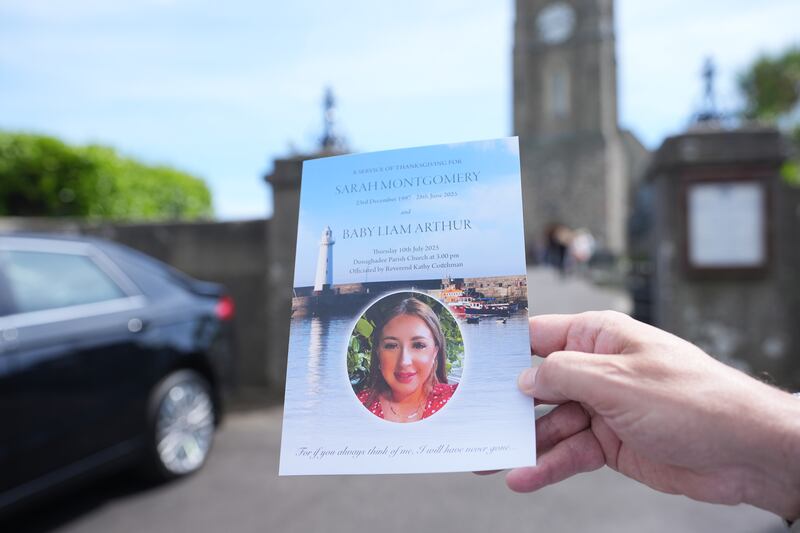Every Monday evening at 6.35 the democracy bell rings on Leipzig’s Augustusplatz. The bell – a huge, upright brass egg – rings in memory of the momentous march of 70,000 people around the Saxon city on Monday, October 9th, 1989.
It was the largest “Montagsdemo” or Monday demonstration to date against the tottering East Berlin politburo. Reports of the Leipzig march, broadcast on West German television, encouraged other easterners on to the streets. A month later the Berlin Wall was breached and the door opened to German unification.
But Monday demonstrations in Leipzig are not what they used to be and the city’s proud protest legacy has been co-opted repeatedly in recent years, during the 2015 refugee crisis and the Covid-19 pandemic.
Now it’s the turn of Free Saxony, a new far-right movement that is using 1989 protest rhetoric to attract people to demonstrations over the cost-of-living shock.
READ MORE
“It’s getting dark in Germany and not just politically,” wrote the Free Saxony movement on Telegram, urging its 151,000 followers to bring candles, lamps and torches to Monday’s march. “We are the shining light against dark politics.”
The group links neo-Nazis and Covid sceptics with far-right Reichsbürger, who reject the modern state, and its weekly demos are spreading from Saxon villages and towns such as Colditz and Görlitz to the state capital, Dresden, home of the anti-Islam Pegida movement.
This Monday evening in Dresden, the main speaker is Martin Kohlmann, Free Saxony’s co-founder and head. He wants Saxony to withdraw “as far as possible from the madness in Berlin and Brussels” with its “Russian sanctions, corona madness and multiculturalism”.
“We are marching into a dictatorship,” says Kohlmann, a lawyer and town councillor in the Saxon city of Chemnitz.
Kohlmann, who has nearly 7,800 subscribers on Telegram, was recently found guilty of incitement and fined €2,100 for suggesting, while defending a client in court, that no gas chambers existed in wartime Germany.
Free Saxony’s weekly demonstrations attract anything from a few dozen to 7,000 participants. On October 3rd, the day of German unity, it activated its online networks and joined forces with other groups to bring 100,000 people on to the streets.
On these marches, the signs and banners reflect rising concerns about the war, winter energy bills and a lingering anti-US and pro-Russian socialisation.
“Stop the price explosions: for peace, freedom and prosperity” read one sign. Another: “We didn’t go on the streets in 1989 for this sh*t”.
For experts, these marches are more serious than previous waves because a real threat to prosperity is drawing on to the streets people who might not otherwise have appeared. “Poor people, single parents and so on, people who no longer have any options left if energy price rises driven them into poverty,” said Prof Matthias Qwent, sociologist at the University of Magdeburg, to MDR public television.
The marches have caught out the far-right Alternative für Deutschland (AfD), by far Saxony’s most popular party with 28 per cent. While AfD leaders at federal level have rejected co-operation with Free Saxony, local party officials have a more relaxed approach.
Leading the fightback against the new grouping in Leipzig are the city’s churches. Back in 1989, they were the main gathering and discussion venues for the civil rights moment.
Fluttering now on the facades of Leipzig’s main Protestant and Catholic churches are huge banners reading: “2022 is not 1989: we’re not living in a dictatorship!”
The organisers say the banners are an attempt to activate the silent majority in Saxony, who reject extremist politics, and warn them away from the new Monday night demonstrations.
“I notice that so any people are tired, frustrated and insecure,” says Christian Wolff, long-time pastor of Leipzig’s historic Church of St Thomas. “The problem is we talk far too little in Saxony about the achievements of the last 30 years.”
For Sebastian Feydt, superintendent (head) of the Lutheran church in Leipzig, the Free Saxony movement is successful because it offers isolated eastern Germans, many with no church or other societal connections, a sense of community.
“Those who think we are facing a situation worse than 1989 cannot be reached through logical argument,” he says. “But this is a tiny minority and it is nonsense to think this will lead to a revolution.”





















